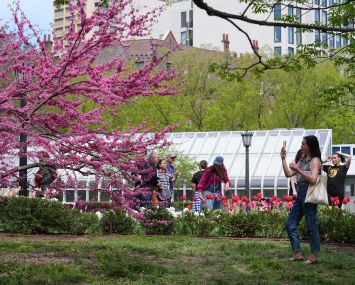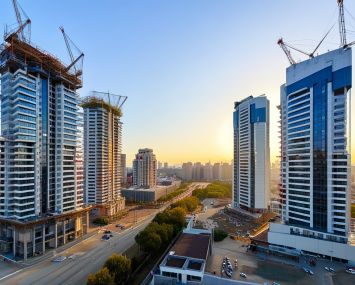It’s Right in Front of You: The Art of Adaptive Reuse
By Scott Spector July 1, 2013 6:00 am
reprintsAs recently as three years ago, toward the end of the Great Recession, adaptive reuse projects were all the rage—and for one very wise reason: budgets.
Tenants and landlords, keen on keeping an eye on the bottom line, realized that they could reduce costs by reconfiguring existing offices spaces. Simple swaps, including reusing fixtures or updating public spaces such as lobbies and corridors while keeping the interior largely the same, just made sense.
While we still witness this phenomenon, and it can be an excellent cost-saving measure, some companies are opting to creatively adapt spaces for other reasons, including to add some style. One such project was an award-winning office we designed for a product development company in New York City’s Terminal Building, at 606 West 28th Street.
By refurbishing the space’s existing wide-plank floors from the early 1900s and restoring its old steel barn doors and incorporating them into the design, we were able to create a vibe that fit the firm’s unique personality, bringing out the old and working with the new. We were also able to highlight the wood joist beams in the ceiling—a term I like to call “recycling by default”—and to sandblast the space’s existing brick, an item the landlord took care of as part of the deal. The industrial elements gave our client a “raw”-looking space, but one that’s up to code and modern. The end result was spectacular, worthy of celebration and a testimony to the fact that adaptive reuse can enhance an office’s appeal.
In addition to honoring the great bones of a space and the inherent green benefits that come with that, there is a time-saving aspect realized when a firm reuses what’s in place. A rapidly growing company, for instance, may need a “stopgap” office space to land in … for a few months or even a few years. One expanding social media firm we represented needed to transform a 40,000-square-foot space for a four-year sublease. Much of the existing space was recycled to deliver on a fast time line. Floors were kept intact, finishes were changed out, updates were performed for code compliance and the existing eight-foot ceilings were removed to create an open, exposed look with some edge—perfect for a social media company. Often, these types of projects require a partnership between the tenant and building owner—and the brokers on both sides of the table—with the architect taking a supporting role to get the deal done.
And savvy brokers, should your client be on the lookout for a way to keep costs at bay, adaptive reuse is definitely still an option you should look into. A simple rebrand and refresh can really transform a space! For instance, a little more than five years ago, we were part of the team that helped a prominent law firm save six figures or more by restoring and renovating a tremendous amount of millwork at its new offices at 601 Lexington Avenue. The space, which had previously belonged to another law firm, was one of the finest examples I have seen of creatively using what was in place to obtain a look for less.
Shifting paradigms are being created by these projects, and tenants and their brokers are no longer afraid to go against the grain, taking locations farther north, east or west, including leasing offices in warehouses in Long Island City, Jersey City, Dumbo and beyond. Buildings are being positioned to attract New York City tenants and, with a little creative updating, clients, particularly those in creative fields, technology and social media, can now envision going from Midtown to Downtown or Park South to the West Side.
No matter what the reason—money, time or aesthetics—one thing is for certain: creative reuse projects can pose a unique opportunity to make the most of what is already in front of you.


